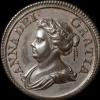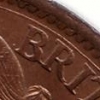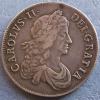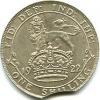-
Posts
57 -
Joined
-
Last visited
-
Days Won
1
petitioncrown last won the day on October 2 2014
petitioncrown had the most liked content!
Profile Information
-
Gender
Not Telling
Recent Profile Visitors
4,486 profile views
petitioncrown's Achievements
Newbie (1/14)
4
Reputation
-
LEU NUMISMATIK first Web auction was an amazing success - well described on the WEB/Internet and great photos. I am following Leu, one of the greatest names in Numismatics, the name started in Bank Leu Zurich under Dr. Mildenburg was my mentor.
- 1 reply
-
- 1
-

-
info@petitioncrown.com www.petitioncrown.com https://www.facebook.com/petitioncrowncoin Henry VIII (1509-1547) Silver Testoon – A rarity struck just before Henry 8 death, it could also have continued to be struck after Henry 8 death 1546-1547/8, Bristol 2 years minting under (WS MOMOGRAM of Sir William Sharington) *HENRIC 8 D G ANGL FRA Z HIB REX Ornate style with roses and pierced quatrefoils in legends. Pellet in lower left of double rose. Bristol Local dies, mm. -/WS monogram, CIVITAS BRISTOLIE, 6.88g, (S.2368, N.1843). A rose crowned between the letters; H. R. also crowned, the legend being CIVITAS BRISTOLIE, with three triple florets before each word. M. M. WS in monogram. It was, therefore, struck at the time when William Sharington was chief officer of the mint at Bristol. Bristol shillings have were not described in any of the works on the English coinage before 1855. The coin is the fourth coinage, or that of the 36th year of Henry VIII., being identical, in all respects, with the London Testoon of that year, except in the name of the town and the mint mark. This BRISTOL TESTOON is a full round problem free flan with a clear and almost fully struck up portrait, a rarity. Maybe the overall finest know specimen. (Only a few were left in circulation mostly shaved/clipped and displayed weakness in large areas) Provenance: Spinks, Seaby's in the 1960s, purchased Bristol 1799-1822? Hoards: Testoons of Henry VIII are, as one would expect, not represented, having been drawn out of circulation by a series of government decrees issued on 10 April 1548, 31 January 1549 and 22 May 1549. (Why should they be horded as they were debased and would not be horded, Bristol Testoons had been replaced with smaller currency as the government replaced coinage of debased Testoons with coins of full value) The British Museum hold 45 Coins struck at London & 4 at Bristol (Papers done on H8 Testoons incl. Jacobs fail to detail Testoons struck at Bristol due to lack of specimens. Sir William Sharington counterfeited 12’000 gbp Testoons and admitted to this act in the Bristol mint and clipped/shaved a further 4’000 gbp from these coins. He was found guilty and all his assets were taken from him, after this he was pardoned and his assets restored to him. All the Testoons were withdrawn at 100% value and replaced by Groats or smaller currency or gold. The Testoons had therefore 100% full bullion value and the people lost no money. It is noted the Kings uncle Sir Thomas Seymour Lord High Admiral enabled this traitorous act to take place. Sir William Sharington (more detailed information) He served as Member of Parliament for Heytesbury in 1545 and for Bramber in 1547. He was knighted at the coronation of King Edward VI on 20 February 1547.He then became one of the two knights of the shire for Wiltshire. Apart from his interests in land, Sharington was also a merchant and owned several ships trading out of Bristol. He is known to have bought wool from all parts of Wiltshire and was also active as a moneylender. By 1548, Sharington had begun to defraud the Bristol mint by making coins too light and also by minting more coins than had been ordered, keeping false records to fend off discovery. According to his later confession, he had been afraid that his minting activity would leave him out of pocket. He may also have been anxious about the costs of his development at Lacock. As a result, Sharington became involved in a plot by Thomas, Lord Seymour, to launch an armed uprising, overthrow the government of Seymour's brother Edward Seymour, 1st Duke of Somerset, and capture the boy king Edward VI. Sharington had sought the protection of Seymour in the event of the discovery that he was profiting dishonestly from his office at the mint, and Seymour persuaded Sharington to supply funds for his plot. He asked Sharington whether he could make £10,000, enough money to keep ten thousand armed men in action for a month, and Sharington had said he could and that Seymour "should lack no money". However, the plot was discovered and in January 1549, both men were arrested, Sharington on charges of coining base money, clipping, and other frauds.[12] Sharington confessed, blaming Seymour, and suffered an attainder, forfeiting his landed estates and being ejected from his seat in parliament, while Seymour was beheaded. The reason stated for Sharington's attainder was that he had coined Testoons for personal gain. However, all Testoons of the period struck in quantity by all English mints were produced in base silver. In saving his neck, Sharington had successfully sought the help of Francis Talbot, 5th Earl of Shrewsbury, and of Thomas Wriothesley, 1st Earl of Southampton, and had pleaded with Somerset himself. Without Thomas Seymour, they saw Sharington as no political threat to them, and he was also helped by Hugh Latimer, who referred to him in a sermon preached before the king during Lent of 1549, calling him "an honest gentleman, and one that God loveth... a chosen man of God, and one of his elected". In November 1549 Sharington was pardoned, and on the payment of £12,867, he even recovered his estates.
-
NOTHING NEW IN THE WORLD, NOTHING CHANGES, this was in 122 AD, have a smile:- Attached is Hadrian on a low plinth addressing the British Legions in 122 AD in Britain. Recently displayed for many years at the British Museum Hadrian's Biographer wrote "(Hadrian) was the first to build a wall 80 miles long to separate the Romans from the barbarians" www.petitioncrown.com
-
Hi Nicholas Noted your interest in GROATS Henry IV 1399-1413 Light coinage, 1412-13 Groat 1399-1412 No Heavy Coinage Groats are known. 3.89g, class II(a), (PII), London, m.m. cross pattée, legend ends franc, annulet to left and pellet to right of crown, ten arches to tressure, rev. slipped trefoil after posvi, reverse barred ns (N.1359a; S.1727; Potter 2, 2/2 [Pl. viii,6]; Stewartby p.323, PII), an unusually well struck full round coin, N. extra fine, extremely rare in this condition. Spink 101 Nov 1993 (90) see photo on http://www.petitioncrown.com/ at the bottom of the page r GC
-
Hi Nicholas Thanks for your kind comments, these days it is very difficult to find British coins and for sure Roman Bronzesin a 'natural state of preservation'. Each piece is Art & History. It is only because of an oversight that this Imperial Roman coin was not cleaned down to the patina by an artist who makes the coins look what is not possible for a Roman Sestertius Bronze to look like. In my opinion the rarest of all coins are the Roman Bronzes for sure I have never seen an FDC one r GC hope in the next few months to finish upgrading www.petitioncrown.com
-
Hi Pekris pleased you enjoyed the coin and article Fulvia Plautilla – you r correct also an interesting woman. She became the only wife of Caracalla, I read somewhere she had a daughter, cannot remember if we have her daughter’s name. Her portrait is more attractive than Plotina, whereas Plotina looked more aristocratic +/- 100 years before, well Rome was at its zenith with Trajan and Plotina followed by Hadrian. She had a sad demise after her father had committed treason and she was murdered by her husband’s orders. GC
-
www.petitioncrown.com I love Roman coins because of their artistry, their beautiful style, the fact that their content tells us about classical antiquity and, of course, for their quality. The Sestertius is, for me, the unsurpassed Roman Imperial Roman coin to collect, since its size allows the die engraver great scope and because, over time, it can develop an often colorful and beautiful patina, which, once again, appears most magnificently on a coin of this size. In fact, in my opinion the sestertius is the most interesting denomination of the Roman Imperial coinage. Its value was officially a quarter of the silver Denarius, but its large size meant that it was a perfect vehicle for propaganda purposes, and was used as such from when it was first issued under Augustus until it was discontinued during the great inflation of the 260s. The sestertius described below was minted in c. 112 AD in honour of Pompeia PLOTINA, the wife of TRAJAN (emperor from 98 to 117). It is one of the finest examples of its type to survive from ancient times. Every coin has its own story to tell, if we know how to listen to it! This coin of Plotina was first published when it appeared in an auction catalogue of 1906 (more about that below) and would never come into my collection had it not been for a young man named Yves Gunzenreiner. Yves, who is now finishing his degree at the University of Zürich, is continuing his numismatic interests by working at Nomos AG in Zurich under the sometimes watchful eye of the inimitable Dr. Alan Walker, whose numismatic knowledge, at least in my opinion, is unrivaled. This coin, and many more in my collection have had the Dr.’s ‘blessing’; after all, every collector and collection needs a mentor, since only with the help of a ‘team’ can you build your collection and fulfill your aspirations. This coin is one of the great treasures of my collection, and is of the highest rarity, both because of its state of preservation and for its provenance: it comes from a hoard that was found in the late 1890’s in Bolsena, Italy* and has remained untouched, as it was found, until today. It is well struck and well centered on a broad flan so that the naturally aristocratic features of the Empress appear in a most noble manner. Quite clearly, after its discovery it was only brushed to remove any soil and dirt adhering from years under the ground. It was described and illustrated in the auction catalogue of 1906 (there it was termed Magnifique and FDC); it then sold for an immense price (1400 Lit) 349 and then a year later sold in Martinetti Collection (Sangiorgi Galleries, Sambon/Canessa, 18 November 1907), lot 1933 PLOTINA ex.Sarti ending up in a collection, which may have begun before World War I, but certainly finished in the early 1960s; after being in a bank vault for over a generation the collection was recently sold at auction. The whole hoard was legally acquired by Prof. Prospero Sarti soon after it was found; he had intended to catalogue, describe and clean the coins during his proposed retirement, but his sudden death in 1904 meant that none of that work was done. This was an enormous loss because this hoard was clearly one of the most interesting and important hoards of 1st and 2nd century AD aes ever found (the fact that so many of the coins that were in it were little worn may even mean that the coins were selected from circulation specifically because of their condition). Until recently this hoard had been forgotten, but it is fair to suggest that one result of the Sarti sale was to provide collectors and museums with a remarkable number of Roman bronze coins, which, when cleaned, entered collections and museums in Europe and elsewhere (it is known that c. 4000 coins were in the Bolsena find and only a mere fraction of those were sold individually at the Sarti sale; even fewer were illustrated in 1906 with the vast majority being sold uncleaned in multiple lots). Alas, virtually all of this provenance information seems to have been lost. Plotina is portrayed with aquiline features, with her hair raised over a diadem over her forehead, and bound with pearls. The wonderful long spiral curls of her hair twist around each other sinuously at the back of her head. On the reverse Fides (Trust) stands facing, her head turned to the right, and holds a basket of fruit with her left hand and barley ears in her right. Plotina was well known for her high moral standards and her kindness, as well as for her support for her husband: she travelled with him to the East and was present at his deathbed. It is said that when Plotina entered the imperial palace after her husband Trajan had become Emperor, she turned to those gathered at the steps and declared “I enter here such a woman as I would wish to be when I leave.” Plotina was instrumental in ensuring that Hadrian, who she greatly liked and was Trajan’s ward, succeeded peacefully to the throne on Trajan’s death. One of the most influential of all Roman Empresses, she was interested in philosophy and in the doctrines of Epicurus, virtue, dignity and simplicity. She provided Romans with fairer taxation, improved education, assisted the poor, and tried to make Roman society ever more tolerant. Plotina first appeared on the coinage in 112 and died in 121/2. 1906 Prof. Prospero Sarti Catalogue - Rome Plotina, wife of Trajan. Sestertius 112-117, Æ 26.81 g. 34 mm. PLOTINA AVG – IMP TRAIANI Diademed and draped bust to right. Rev. FIDES – AVGVST S – C Fides standing right, holding basket of fruit with her left hand and barley ears in her right. Banti 1. BMCRE 1080 (Trajan). Cohen 12. RIC II 740 (Trajan). Strack 441. This coin is an extremely rare Roman Imperial orichalcum (brass) Sestertius of Plotina, and is both an exceptionally fine example and is in its original condition as found (when this piece was sold for 1400 Lire in 1906 this price was simply astoundingly high). There are no other specimens known in this overall condition that have not been at least somewhat re-touched; all the others are of poorer quality, tooled or smoothed (sometimes drastically). *Extract: 1906 Rivista Italiana di Numismatica, p. 276-277, a review of the Sarti Sale… Sale, Sarti in Rome. - This past May in Sangiorgi Gallery in Rome saw the sale of coins and ancient bronzes left by 'Prospero Sarti, Prof. Mr’. The coins cannot be said to constitute a collection itself, it was a choice of beautiful bronzes patiently created over a long period of years in the past, a large quantity of coins in the hands of an amateur. In fact, it contained pieces in a fantastic (meravigIiosa, extraordinario) state of preservation. Two hundred coins, individually chosen to which was added a rich beautiful hoard found a few years ago in Bolsena and consisting of approximately 4000 large bronzes, almost all of the imperial (high) empire. Mr. Sarti had purchased the entire hoard, but had no time to examine it or clean it up before his death. Also in this hoard were some coins in beautiful preservation. The sale attracted amateurs, many shopkeepers or specialists who also competed and prices went up, they went up to limits so far never achieved. Pei lists some large bronzes and we do not believe it even necessary to identify the individual coins, because in this sale the rarity of names seen was completely neglected, prevailing absolutely the modern theory that conservation not only applies to everything, but is the only element of judgment. We believe there have been no other sales of Roman bronzes in beautiful conservation that have had such an enthusiastic reception. Great bronze (as listed from the Sarti Sale 1906). Augustus, Livia, Tiberius, Drusus, Nero Drusus, Agrippina, Caligula, Claudius, Nero, Galba, Vitellius, Vespasian, Titus, Domitian, Nerva, Trajan, Plotina, Hadrian, Sabina, Aelius, Antoninus Pius, M. Aurelius, Faustina. The lot description of this coin from the only known marked priced catalogue of the 1906 sale. Photography: Taking photographs of coins that were from a hoard, in this case 5% of uncleaned and with loose material encrusted created a new challenge. The coins illustrated on the Sarti (Sangiorgi Rome) plates were illustrated by DIRECT PHOTOGRAPHY, NOT FROM CASTS. They were simply photographed from casts the way plates were almost invariably made in those days. Any difference in shape between the coin as illustrated in Sarti and in later catalogues is from the fact that the photograph used in Sarti was improperly trimmed before the plate was made. This means that ALL THE COINS ILLUSTRATED IN SARTI Sangiorgi Rome SHOWS US THE COINS IN DIRECT PHOTOGRAPHS. Sangiorgi in Rome, was a very serious firm that sold all kinds of things at auction at the beginning of the 1900’s, probably they had its own studio and, thus, was enabled to do direct photographs of the coins. Geoffrey Cope & Dr. Alan Walker Nomos Zurich
-
www.petitioncrown.com British Coins 2014-15 an overall view of now and the future What is creating the interest in the British Coin market? Not just the upward trend of prices but the increasing number of collectors. What has really happened over the last decade leading to 2014/15? We need to understand a few facts and then mix all the facts up to give an individual potted view of the future. Numismatic Coins are ART. They have always been used to show the RULER how he would like to be seen and the reverse side of the coin has CONTENT, to tell a story of achievement or strength or whatever the ruler wants show on the reverse. This applies to English, Scottish & Irish coins. Bargains, I have seldom seen any bargains. If you are offered a coin that is substantially below what is considered market price, check it carefully as there is likely to be something wrong with the coin. Numismatic rarities have one main disadvantage in that they are not as liquid as say bullion coins. The internet has changed this to some extent as the audience is much larger than before. (Autumn 2013 saw a collection of 18 top quality British coins sold via an Internet Auction for $1.6m before charging commission, all this organized within 90 days). The question that is never fully answered is what makes a fair price? Willing buyer, willing seller, the problem is that collectors of British coins fall in love with every piece and are loathe to part. Quality pieces have always been sought after and preserved carefully through many generations of collectors, since auction catalogues are known from the early 1700’s and collections were assembled well before. The relationship of quality to non-quality is not more than 1:100, or possibly even less. The importance of grading is paramount, another service that today’s “dealer” can offer, and the ability to see and check a coin not just from a photograph but to hold the coin and check the quality of the patina and eye appeal. Plastic captivity is only one possible solution but cannot replace the expertise of a long term dealer with knowledge who wishes to see the whole coin, edges and metal. Coins have the added interest, coins are money and people ‘love money’, they are portable and wonderful collections can be built from Ancient Greek to Modern British Coins. Buy books, read and learn as much as possible about the subject so purchase good reference books; this has always been a strong criteria for success. Knowledge of price/grade is essential for the collector with “Coins of England”, the British Bible on pricing, carefully reflecting prices paid at auction and the market in general. Spinks auctions are the leading indication to the British market in rare coins. What is fuelling the market making prices continue to rise? This is not so complicated to answer; we have a period where we are printing paper (money). The more we print the less it is worth in purchasing power. 2008/9 was an example of a major blip in the financial markets, blip you say? Yes, as one day there needs to be a correction. Then your collectables will be worth less – sure, but they will have some intrinsic value and anyhow you have had fun collecting. Now we move to other factors: The Internet has made a world of no borders, the adoption of on-line bidding at auction is increasing, digital photography is amazing and bidding techniques have changed. Beware of dealers and others who will use the internet to increase prices. Collectors should remind themselves of the old adage, ‘all that glitters is not gold’. People are living longer and the retirement age of 65+/- is no longer relevant as it is creating new problems of lack of pension income to support their financial needs, demanding that individuals look for new pastimes to create income. Dealers are offering new services including advice, viewing sales, increasing stock levels or focusing more carefully where they should be exhibiting. We still need to watch the difference between dealers on the other side of the pond in the US and UK dealers in general. The US dealer invests more of his wealth in building stocks than the British dealer who has different priorities. Autumn 2013 The market was pre-dominantly Auction driven, what did we learn in the British Market. Top quality material that had not been on the market for 20+ years made +15% above top estimate, which were high to start with. Medium to better quality saw a rise upwards to the average area of low book estimate Poorer quality stayed low with fewer bidders What was clearly evident that the top quality items had more bidders at the higher end over the top estimate? We can discuss different areas of the British market that have opportunities for growth; one of these is early British Copper from Charles II 1662 to the end of George I 1727. Top quality is difficult to find. Anglo Saxon pennies are another, but they are continually being found. The wonderful RAVEN Penny in the autumn auctions did not find a buyer. Future While interest rates remain low and governments print paper, the price of collectables such as coins will rise. House prices are a bubble as governments use the ‘mortgage cover tool’ to meet their own needs knowing that the individual won’t repay their loan, however, the Government is not dealing with repayments but the “good feeling” factor. The effect of a limited number of dealers from say the USA building and holding British stocks of coins to service the growing number of American collectors showing interest in British coins will see prices rise to levels not seen in the UK. (Consider the sale of the RAWLINS POUND XX coin in September 152’000 UK Pounds ($243’000) such a rarity for a US Coin would be say $2’000’000. Final conclusion with coins is “you have the best and the rest”. www.petitioncrown.com
-
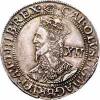
British Coins 2013/2014
petitioncrown posted a topic in British Coin Related Discussions & Enquiries
Collecting British Coins 2013/2014 - Prepare for the future www.petitioncrown.com (non-commercial site) Consider old coins as a hobby, you will be collecting a finite number available to collectors. Wealth protect and an enjoyable. COINS are an alternative Asset Class that are portable and collectable and classed as art and part of your preparation for your future financial strategy. Read, study and enjoy what millions have decided to have as part of their financial planning. Collect the finest quality Coins you can afford, such as British that date history over 1000 years have quietly been held by collectors/investors offer as an another alternative safe-haven asset class and diversification for future protection against inflation. Gold joins the portfolio in in bars or coins and is called bullion, buy physical gold and not paper gold, A diversification from regular Asset Classes such as Stocks, Shares, Bonds. Property etc. Calculated investment returns show an increase over different periods, I decided that figures be explained by individual advisers. Coins, Gold are a tangible safe-haven. Today we look for diversity to our portfolio as well as a matrix that gives us the possibilities to protect our wealth and counter inflation will be part of the future. Turbulent world economy The turbulent world economy has created an increased number of questions, not least is whether the capitalist world as we know it changed forever from 2008? Individuals have to take a greater responsibility in their future planning in investments? How will, or could alternative investments such as coins play a part in the future of an overall planning matrix to pay for our children’s future education or pension funding? Will the retirement age need to be increased to 70 or 72? Will company dividends and capital growth support the growing numbers of regular savers for their later retirement? How will banking changes alter the banks responsibility and perspective to its clients? New Collectors and Investors first buy a book on “coin collecting†and begin to understand what has made collecting coins the hobby of Kings, Princes, Emperors, Arch Bishops to name a few over two thousand years of history. Coins are history; they date history and started over 2500 years ago. What will be the effect of sovereign debt in the future? Remember for as long as coins have been minted, gold has been the only metal to measure value. Ask yourself, if governments print 4%-8% more paper yearly what your money is valued at in one generation. This is serious, see www.measuringworth.com/ you will be shocked. Anything written here is a private view of the future and not investment advice that can be better filled by the expert in these fields. Everything connected to coin collecting or shall we say ‘money’ seems to attract many new collectors that the market seems at present to have no ending of demand for quality coins and supported by what is in vogue at a period of time, well money has always been popular and around a long time. Geoffrey Cope www.petitioncrown.com -
To the point and correct, thanks jeff Not anything and everything. I am in truth a fairly selective magpie. As for worrying what is going to happen in the future, don't worry until the situation arises. All our collections are special to each of us, but very few will be first class and worthy of note. Those that have them will be aware of this and most will somewhere along the way have communicated the value to close relatives. Obviously, if you are collecting surreptitiously without the wife or family knowing, you are storing up a potential problem for the future, but if you share your enthusiasm with family members then they will grow to appreciate the collection too. I'm not saying they have to wholeheartedly embrace collecting, but forewarned is forearmed. I suppose I am saying, don't be the avaricious and secretive Gollum and be a bit more like the philanthropic members of past and present society - sharing your wealth by passing on the knowledge of what is in a decent collection will set them in good stead for the future and not result in throwing value away.
-
Hi All As 2012 enters I look think back over 2011 and the people I met the collections I have browsed. What an interesting year. I was shown several collections, what a great year and what was more important to me was to understand how each individual is developing his collection. What coins are special to each collector? How there seems to be no ending to the need to study what we would have thought would be well recorded information. Well it is money and money has always been look after and one would have thought well recoded. I am interested how you decide the theme you are interested in, what period? Do they have interest to change or just develop and expand your existing collections? At the end of the year I was fortunate to acquire an EADGAR Halfpenny .53g, why because I had not seen such domination. I would also like the Henry III double penny. I am a creature of wanting the unusual. The other unusual coin was the date dated 1513 Henry VIII Tournai Groat, not because it was a Tournai but the first dated British coin. The British series is wonderful; it has so many options, varieties that we will never bore Wishing you all a happy new healthy & numismatic year Jeff petitioncrown.com


